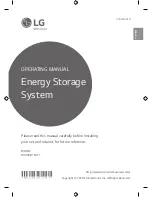
UMAX090690. Version: 1.2 Preliminary Documentation
– May Be Subject To Change
15-37
4. BATTERY CHARGER FUNCTION BLOCKS
4.1.
Charging Profile Function Blocks
The Charging Profile function blocks are used to set all parameters needed in the battery charging
algorithm. These parameters characterize the conditions which the charging algorithm will use to
switch between charging modes. The Chargers can be disabled, enabled, or set to be controlled
by CAN Rx messages.
Please refer to Section 2, where these parameters are described in detail.
4.2.
Miscellaneous Input Function Block
The Miscellaneous Input function block is used to define parameters used in controlling the ECU.
The
Undervoltage Threshold, Overvoltage Threshold
and
Shutdown Temperature
, setpoints
are used to determine the values at which the ECU generates the corresponding fault.
The CAN1 Diagnostic Setting
determines the behaviour over CAN1. Diagnostic messages can
be turned ON/OFF, as well as set to block empty diagnostic messages.
4.3.
J1939 Network Function Block
The Network function block controls the way the battery charger communicates on the J1939
network. Further details on the J1939 network features are available in Section 5.
The Module Address (
ECU Address
in EA), setpoint specifies the dynamic network address of the
battery charger, which is claimed when the charger is connected to the network. This setpoint can
be changed automatically in case the address is already taken by a higher priority in the ECU.
The ECU Instance (
ECU Instance Number
in the EA), setpoint should be set by the user if two or
more battery chargers are present on the network.
4.4.
Diagnostic Input Function Blocks
The Diagnostic Input function blocks are used to setup the diagnostic messages for the controller.
The 5 types of diagnostics supported by the battery charger are shown in Table 8.
















































